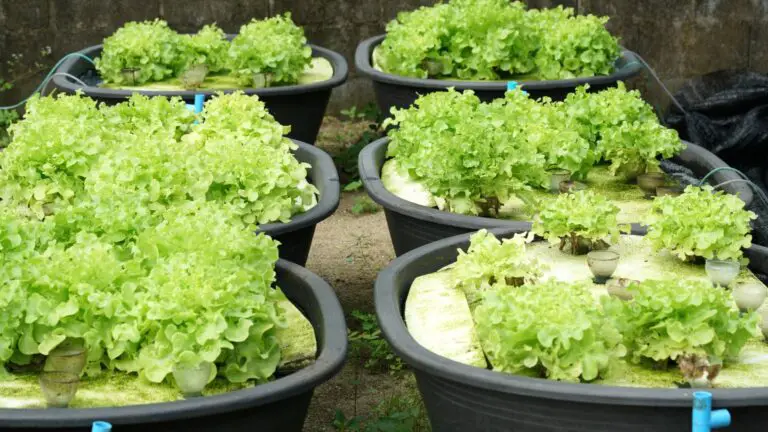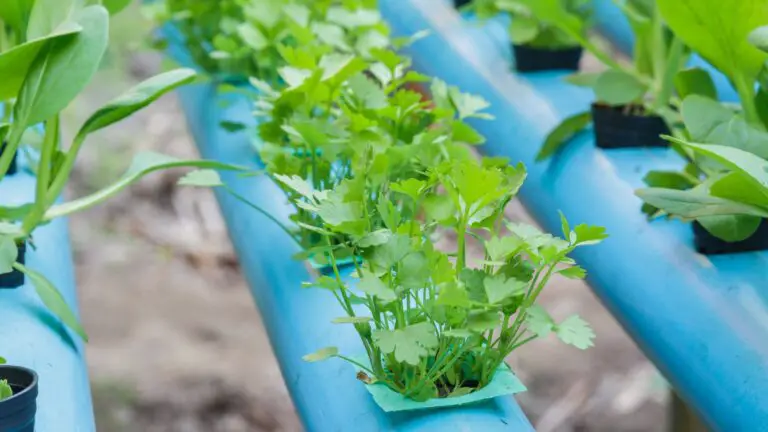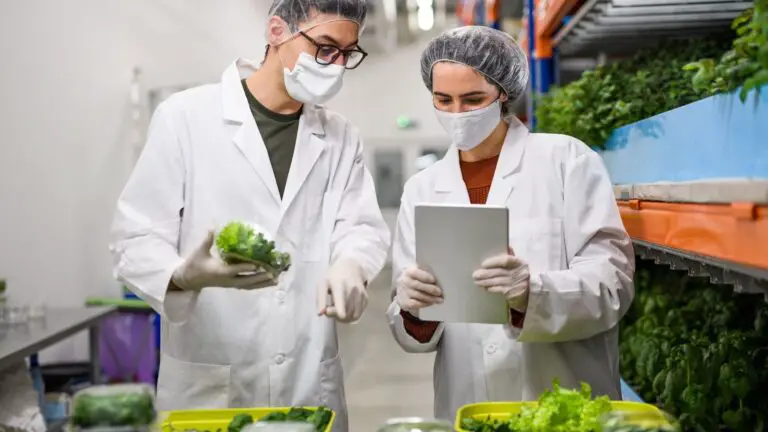Vertical Hydroponics: The Basics
Disclosure: Your purchases through our links may earn us a small commission, supporting our site’s ability to provide valuable information to our readers. Rest assured, it won’t impact your price. Thank you for your support.
Hydroponics is a method of growing plants in water without soil. This type of gardening has become increasingly popular in recent years as a way to grow plants indoors without using soil.
What Is Vertical Hydroponics?
In short, vertical hydroponics is a type of hydroponic growing system that utilizes vertical space rather than horizontal space. In vertical hydroponics, plants are grown in vertically stacked planters that contain a nutrient-rich water solution, or the water solution flows through the planters and provides nutrients to the plant’s roots.
One advantage of this method is that it allows growers to produce a large number of plants in a small area. Additionally, you can use vertical hydroponics to grow a wide variety of plants indoors year-round.
Additionally, vertical hydroponics systems can be easily automated, making them ideal for commercial growers who need to produce large quantities of plants efficiently and quickly.
Related: Why You Should Use Hydro Towers for Your Vegetables
How Does Vertical Hydroponics Work?
The answer lies in the roots.
In traditional methods, most plants rely on soil to anchor their roots and absorb moisture and nutrients from the ground.
In vertical hydroponics, the roots are anchored in perforated grow media such as Rockwool, sponge, oasis cube, or coco coir. The perforations in the grow medium allow the roots to come into contact with the nutrient-rich water solution. In some vertical hydroponic methods growing medium may not be necessary as the plant’s roots can be directly suspended in the water.
The water solution is typically pumped from a reservoir to the top planter in the system and then flows down through the remaining planters. As the water flows, it picks up oxygen and carries it down to the roots of the plants. The oxygenation of the roots is essential for plant growth.
What Are the Benefits of Vertical Hydroponics?
There are many benefits to growing plants using this method, including:
- Reduced need for pesticides: Because there is no soil, there is less risk of pests or diseases hitchhiking into your garden on contaminated dirt. Because vertical hydroponic systems allow growers to automate their growing process, they also allow growers to control pests more easily. Automated systems can be programmed to dispense pest control products only when necessary—reducing the chances of pests becoming resistant to those products.
- Increased growth rate: Plants grown in vertical hydroponic systems typically grow 20-25% faster than those grown in soil because they have constant access to oxygen, moisture, and nutrients.
- Nutrient Control: Similarly, automated vertical hydroponic systems can also be programmed to dispense nutrients only when necessary—reducing nutrient waste and ensuring that plants receive exactly what they need to prosper.
- Less water consumption: Hydroponic gardens use 10% of the water that traditional gardens use because none of the water is lost to evaporation or runoff. Because vertical hydroponic systems recirculate water between grow trays, they use much less water than traditional growing methods. Aeroponic systems utilize misting instead of watering and can use even less water. This is better for the environment and can help you save money on your water bill in the long run.
- Improved yield: Thanks to the continuous supply of nutrients and the controlled environment, plants grown using hydroponics produce larger yields than those grown in soil.
- Increased Efficiency: Because vertical hydroponic systems use vertical space, they are much more efficient than traditional growing methods. This means you can produce more plants in the same area (or produce the same number of plants in less space). Additionally, because you can automate vertical hydroponic systems relatively easily, they can help you save time and labor costs in the long run.
- Better for the Environment: traditional farming methods often involve tilling the soil and using harmful pesticides and herbicides (If organic methods are ignored). These activities can degrade the quality of the soil and potentially contaminate groundwater supplies. With vertical hydroponics, however, you don’t have to till the soil or use any harmful chemicals—making it much better for the environment.
What Are the Disadvantages of Vertical Hydroponics?
Many people are interested in starting a hydroponic garden, and vertical hydroponics is a popular choice. While there are many advantages to vertical hydroponics, there are also some disadvantages that you should be aware of before you get started.
- System Complexity: One of the biggest disadvantages of vertical hydroponics is that the systems can be quite complex. There are many moving parts; if one thing goes wrong, it can throw off the entire system. This complexity also makes vertical hydroponics systems more expensive than other hydroponic systems.
- Higher initial cost: Vertical hydroponic systems can be more expensive to set up than traditional soil gardens. However, the increased yields often make up for the higher upfront cost. Click here to check the latest prices.
- Pest and Disease Issues Lead by Less Monitoring: Another disadvantage of vertical hydroponics is that pest and disease problems can be magnified if the plants are so close together. In such circumstances, pests and diseases can spread quickly and cause significant damage. It’s important to be attentive about inspecting your plants for pests and diseases and taking action immediately if you see any problems.
- Maintenance Requirements: Vertical hydroponics systems also require more maintenance than other hydroponic systems. They can quickly become overcrowded and produce poor results if not properly maintained. The moving parts in the system need to be regularly inspected and cleaned, and the nutrient solution needs to be changed regularly. If you’re not prepared to do the necessary maintenance, vertical hydroponics may not be the right choice for you.
Conclusion
If you’re looking for a space-saving, eco-friendly way to grow your own food, vertical hydroponics might be right for you.
As you can see, there are many benefits to using a vertical hydroponic system—especially if you’re a commercial grower who needs to produce large quantities of plants quickly and efficiently. With vertical hydroponics, you can grow delicious fruits and vegetables indoors year-round!
But there are some disadvantages that you should be aware of before you get started. Systems can be complex and expensive, pest and disease problems can be magnified, and maintenance requirements are higher.
If you’re thinking about setting up a vertical hydroponic system of your own, be sure to do your research and choose a reputable supplier who can provide you with everything you need to get started.
However, if you’re prepared to do the work, vertical hydroponics can be a great way to grow healthy plants without using soil.
If you are looking to buy any vertical hydroponic kit click here to see the available designs.
Thank you for reading!
Also, read:
Coco Peat vs Coco Coir: What’s the Difference?
The Top 11 Things to Know Before Buying a Grow Light




